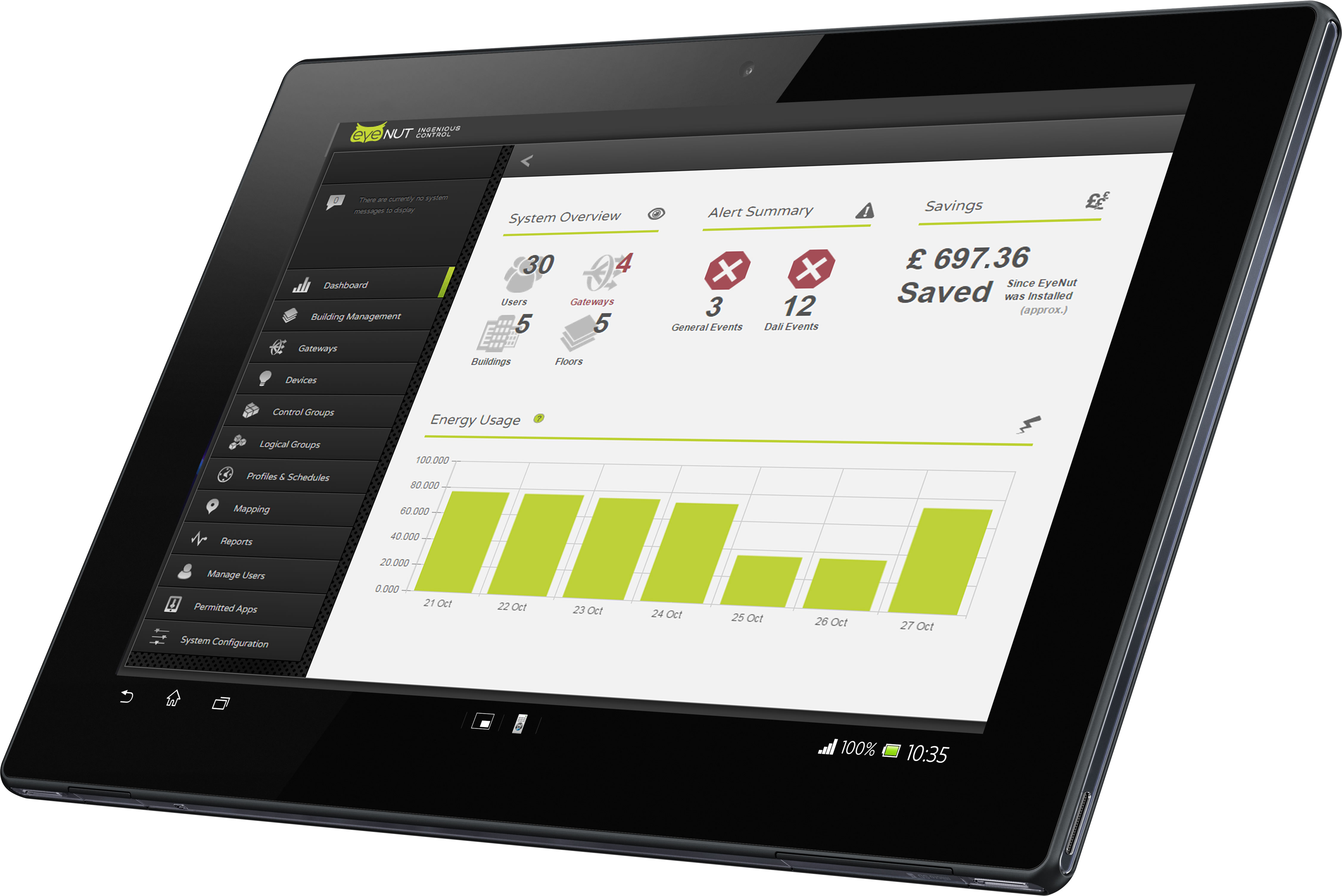Spotlight on new generation lighting controls
A new wave of web-based lighting controls which are user friendly, simple to install and easy to retrofit have hit the market.
Dr Andy Davies of Harvard Engineering, a manufacturer of energy-saving lighting solutions, enlightens us.
Lighting represents the single largest item on the electricity bill of most buildings, an average of 40% of the total and should be an obvious target for energy savings - yet adoption of controls has been remarkably slow.
The fact that traditional control systems are usually expensive and complicated to install and configure, requiring the services of a specialist engineer, could go some way to explain this apparent apathy. These systems also lack flexibility - vital as building usage seems to change more rapidly than ever.
A new generation of wireless lighting controls - simple to install, user friendly and easy to retrofit - is a real game changer. These controls offer an indoor lighting control solution which is so easy to install that any qualified electrician could put the system in place wirelessly in a matter of minutes and hours, depending on size, rather than days.
Crucially, these systems have proved that they can pay for themselves within just two years thanks to the substantial savings that they offer in energy and maintenance costs.
EyeNut is one such system. The wireless monitoring and management solution for interior lighting from Harvard Engineering addresses many of the initial drawbacks faced by existing control systems, as well as offering tangible energy and monetary savings.
Remote management of multiple sites via a single web-based hub is possible for the first time using EyeNut, which is so simple to operate that sophisticated energy-saving strategies can be easily adopted and altered using an online interface simply and effectively.
EyeNut uses the reliable ZigBee standard to operate lights from a computer and is capable of controlling an impressive 500 light points from one wireless gateway compared to just 64 offered by current DALI technology. There is no limit to the number of gateways so therefore, no limit to the number of devices which can be managed by the central hub. The hub, managed in the cloud, can control multiple sites and support access from multiple users. The potential cost-saving opportunities that this brings to organisations managing several buildings are immense.
The new technology’s ZigBee functionality makes light work of the usually time-consuming process of installing lights onto the system or of adding new ones. Upon request, the EyeNut system can also come pre-commissioned, providing users with a plug-and-play solution, which is ready to be installed out of the box.

All new EyeNut systems are completely customisable, with controls able to be managed via an intuitive, user-friendly ‘dashboard’ or GUI. Users can upload a lighting plan which gives a complete view of all light points overlaid on an imported image of their building layout in the mapping tool.
Lighting groups can be created, precisely controlled and managed through a profiling feature, with assigned schedules ranging from simple to sophisticated and variations possible up to every 15 minutes, every day of the year. A two-way flow of information provides operators with energy consumption data so that ‘heat spots’ can be easily identified and energy-saving strategies adopted accordingly.
Switches, sensors and other control devices can be used on these new systems to maximise the use of natural daylight and avoid lighting empty rooms. They can also integrate with existing building management systems to collect occupancy data and even interface with emergency systems so that tests can be carried out at times that are least disruptive to a business.
A 4,500m2 department store recognised the potential for such technology and asked Harvard Engineering, developer of the EyeNut monitoring and management system for indoor lighting, to demonstrate the benefits that could be gained by installing such technology.
EyeNut would be added to an existing LED lighting scheme - easily achievable given the wireless nature of the new technology. It was recommended that, following installation, a number of lighting control strategies be adopted within the store.
Sales floors should be divided into zones, separated by aisle areas. Within each of these zones, ambient lighting, central accent lighting and perimeter accent lighting of vertical surfaces should all be controlled independently as should lighting on aisles, stairwells and entrance areas. Occupancy sensors should also be installed to measure footfall by floor and zone and accent lighting could be selectively dimmed.
The profiling feature would enable accent lighting to be switched off and ambient lighting to be dimmed during cleaning and stocking. Windows should also been installed with daylight sensors so that window lighting could be dimmed or switched off when the weather is brighter.
All of these control strategies could be managed from one central ‘dashboard’, which shows all the light fittings on a layout of the store, allowing for sophisticated lighting displays. Users would also be able to access data reports on lamp status and energy to help to reduce maintenance costs and put the store in control of their energy spend.
The department store found that by implementing EyeNut, they could reduce electricity consumption from 1,500 to 330kWh a day, indicating a rewarding two-year payback on the store’s investment and showing that this new generation of lighting controls can make light work of energy savings.










